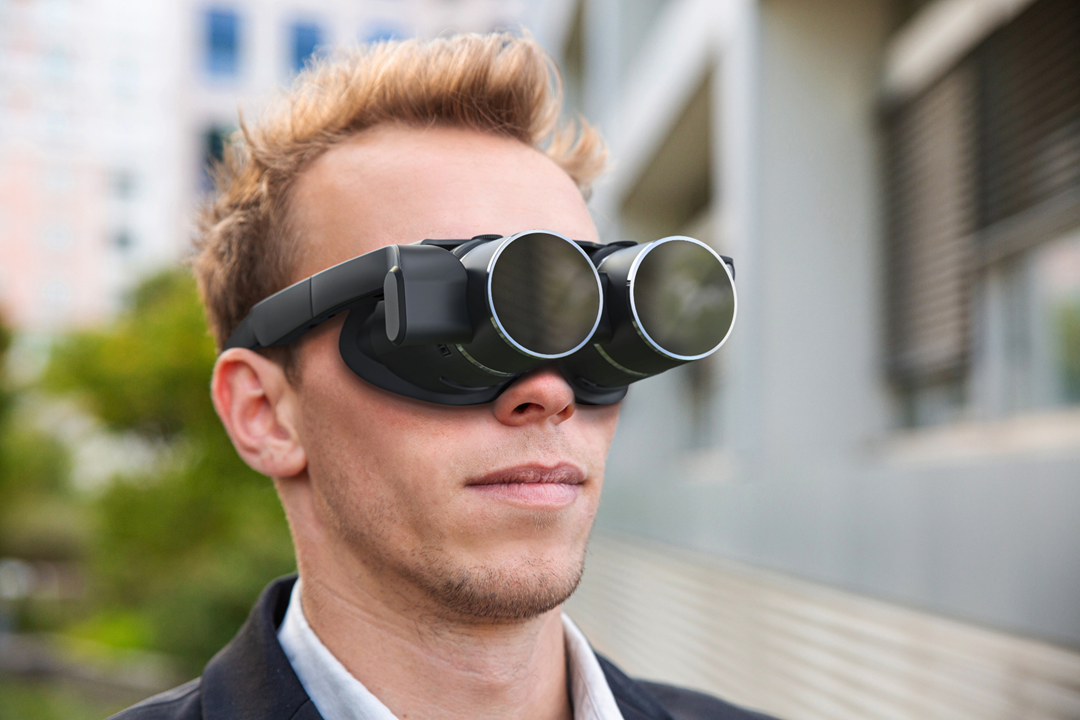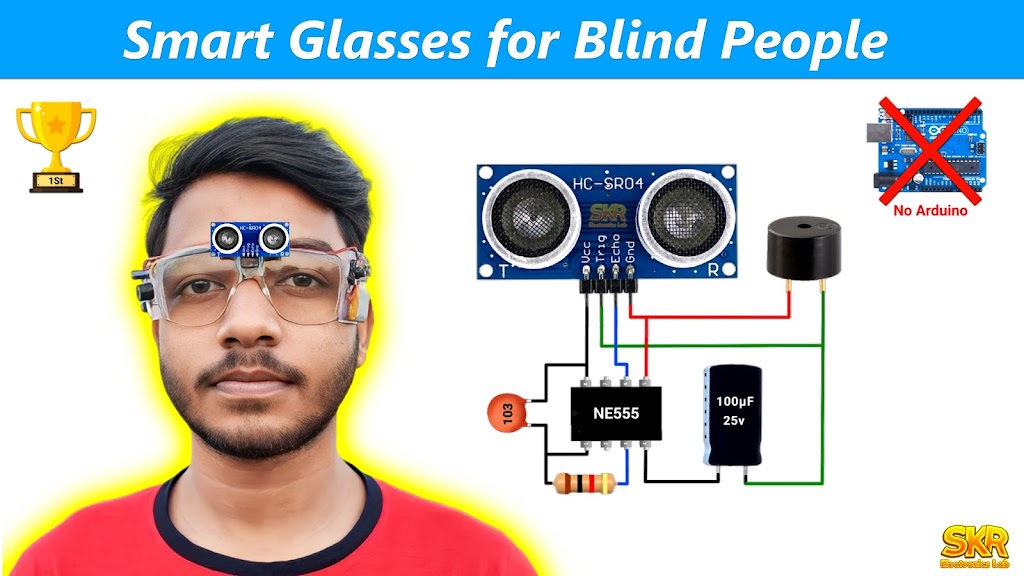Voice-Activated Assistive Devices: Empowering the Visually Impaired Through Innovation
Empowering Independence With Assistive Innovation for the Blind
The combination of assistive modern technology for people who are aesthetically impaired or blind stands for a considerable development in cultivating freedom and improving quality of life. With a variety of devices-- from display readers to ingenious tactile devices-- these modern technologies not just facilitate navigation and interaction yet additionally promote social addition and participation in different facets of life. As we explore the diverse sorts of assistive gadgets and their real-world applications, it becomes clear that the influence is profound. The advancement of this innovation raises critical questions concerning ease of access and future advancements that warrant further exam.
Recognizing Assistive Modern Technology
Although assistive innovation has actually evolved considerably throughout the years, its fundamental function continues to be the exact same: to boost the lifestyle for people with impairments, specifically those who are blind or visually impaired. This technology encompasses a wide range of tools and devices that facilitate independence and performance in day-to-day activities.
Assistive innovation can be categorized into high-tech and low-tech options, each designed to meet details requirements. High-tech devices typically consist of software application applications, specialized hardware, and flexible tools that use sophisticated innovation to offer assistance in numerous contexts. Conversely, low-tech options might entail day-to-day products that are modified to boost availability, such as magnifiers or tactile pens.
The combination of assistive technology right into the lives of people that are blind or aesthetically hindered not only promotes freedom yet also promotes social inclusion and participation in instructional and expert atmospheres. By leveraging these technologies, users can browse their environments, access details, and interact effectively, consequently enhancing their overall top quality of life. Understanding assistive modern technology is vital for experts, caregivers, and supporters that intend to sustain individuals in optimizing their potential and accomplishing higher freedom.
Kinds of Assistive Devices
Assistive devices for the blind and visually impaired are essential tools that improve daily living by addressing specific challenges encountered by individuals. These devices can be broadly classified into three main types: optical gadgets, digital gadgets, and sensory gadgets.

Sensory gadgets, such as Braille display screens and tactile maps, provide different methods to get details. Braille displays convert digital text into Braille, enabling customers to review with touch. Responsive maps use spatial understanding via elevated structures and lines, enabling far better ecological recognition.
Together, these assistive devices encourage people with aesthetic disabilities to involve even more completely with their environments, advertising better freedom and confidence in daily activities.

Effect On Life
The integration of assistive technology into the daily lives of individuals that are visually impaired or blind dramatically boosts their capability to browse and engage with the globe around them. Tools such as screen visitors, Braille presents, and mobile applications facilitate accessibility to details, permitting users to engage with digital web content, interact successfully, and manage day-to-day tasks independently.
In addition, innovations like smart glasses and navigating applications supply real-time aid in unknown environments, improving movement and self-confidence. These tools enable customers to identify challenges, read indications, and even identify faces, hence promoting a feeling of freedom in public spaces. In addition, home automation systems, which can be regulated via voice commands, permit people to handle their living environments a lot more successfully, enhancing convenience and safety and security.
The effect of assistive technology expands past sensible jobs; it promotes social addition and psychological well-being. By connecting the gap between individuals and their environments, these technologies empower individuals to participate fully in neighborhood tasks, seek instructional opportunities, and take part in purposeful relationships. Ultimately, the development of assistive innovation is instrumental in redefining the opportunities for individuals who are blind or visually impaired, resulting in an extra available and inclusive culture.
Success Stories and Testimonials

One more powerful review comes from Mark, a recent university grad that used screen reading software program throughout his academic directory journey. This technology allowed him to accessibility program materials and participate in conversations, eventually leading to his effective change right into the labor force. Mark credit ratings assistive innovation for empowering him to achieve his occupation goals, stressing its role in leveling the playing field for people with visual impairments.
In addition, recreation center have reported raised involvement in their programs thanks to the introduction of available digital systems. These platforms have made it simpler for people to connect, share sources, and support one an additional. These success tales collectively underscore the extensive impact of assistive innovation in cultivating self-reliance, boosting lifestyle, and damaging down barriers for the blind and aesthetically impaired neighborhood.
Future Fads in Assistive Tech
Arising modern technologies are poised to reinvent the landscape of assistive tech for individuals that are blind or visually damaged. Innovations in expert system (AI) and maker learning are improving the capacities of devices, allowing more instinctive individual experiences. As an example, AI-driven applications are progressively able to identify items and review text aloud in real-time, providing individuals with beneficial details about their surroundings.
In addition, developments in wearable technology are developing brand-new opportunities for freedom. Smart glasses geared up with enhanced reality features can overlay essential details onto the user's field of vision, facilitating navigating and interaction with the atmosphere. The integration of Internet of Points (IoT) devices is simplifying availability in smart homes, permitting users to regulate devices and receive alerts with voice commands or tactile interfaces.
The growth of braille screens and tactile responses systems is also rising, advertising accessibility to digital material and improving communication. As these innovations remain to advance, they guarantee to improve day-to-day living, educational opportunities, and employment leads for individuals with visual impairments. Continuous partnership in between engineers, users, and advocacy teams will certainly be necessary in guaranteeing these developments fulfill the demands of the community successfully.
Verdict
Finally, assistive technology plays an essential role in enhancing the self-reliance of people that are blind or visually damaged. By providing important tools and resources, these modern technologies assist in improved access, interaction, and navigation to information, thus fostering freedom and self-esteem. The transformative impact of assistive gadgets not only promotes efficient interaction what kind of eye doctor is an od with the environment however likewise urges social incorporation and involvement in numerous aspects of life, ultimately empowering users to thrive within their areas.
The integration of assistive innovation for individuals who are blind or visually impaired stands for a substantial advancement in promoting freedom and improving quality of life.The combination of assistive technology into the lives of people who are blind or aesthetically harmed not just promotes freedom however additionally fosters social addition and participation in educational and specialist settings. Eventually, the development of assistive innovation is critical in redefining the possibilities for check my reference people that are blind or aesthetically impaired, leading to an extra inclusive and accessible society.
Many individuals that are blind or visually damaged have actually shared motivating success tales that highlight the transformative impact of assistive modern technology on their lives.In conclusion, assistive technology plays an essential duty in boosting the independence of individuals that are blind or visually damaged.